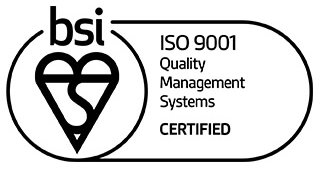Copper Based Alloys
Copper based alloys
Copper has been mined for thousands of years, dating to prehistoric times. The popularity of this metal is related to its physical properties, mainly its ductility, conductivity and resistance to corrosion. In order to expand on these properties, copper can be alloyed with different materials to create combinations that are capable of being used in a wide range of applications. Copper is a base metal with an atomic symbol of Cu.
Copper alloys are metals that have the predominant component of copper. Copper-based investment castings are incredibly versatile, with more than 400 different alloys with different properties.

| Investment casting (premium grade) | Investment casting (commercial grade) | Die casting | Metal injection moulding (MIM) | Forging | Technical Specifications | |
| Stainless steel & heat resistant alloys | ✓ | ✓ | ✓ | ✓ | Download | |
| Carbon steel | ✓ | ✓ | ✓ | ✓ | Download | |
| Nickel & cobalt alloys | ✓ | Download | ||||
| Aluminium alloys | ✓ | ✓ | ✓ | Download | ||
| Copper based alloys | ✓ | ✓ | Download | |||
| Titanium | ✓ | Download |
We are continuously adding new materials to our offering, for the latest information or if you have a special request, please contact us.
The benefits of choosing copper-based alloys
Because the number of copper-based alloys is so large, it is necessary that you choose the right one for your needs. While each alloy has its own properties, they tend to provide similar advantages that can help you make the right decision:
Copper-based investment casting is incredibly versatile, so it is used in a large variety of applications, such as ship propellers, plumbing fixtures and electrical wires. We can investment cast any part you require from copper-based alloys.
Types of copper-based alloys
An alloy of copper and other metals such as tin (around 12% of composition), aluminium, manganese, zinc and silicon, and is typically a yellow/brown colour; the melting point will vary depending on the alloying elements but is usually around 950oC.
Bronze has been used for thousands of years to cast metal objects such as weaponry, jewellery and artwork, but in modern times these alloys are used for many applications such as, bushes, bearings, gears, boat propellers and other marine applications.
Generally an alloy of copper and zinc (which can vary between a few percentages to 40%) and is typically a bright yellow/yellow red brown colour; its melting point will vary depending on the alloying elements but tends to be between 900 oC and 940oC. Brass is a general term that can encompass many different grades, and one of the most popular is nickel silver, created from copper, nickel and zinc – its colour is not as brassy, but silvery instead.
Brass alloys can be used to produce musical instruments, plumbing components, decorative valves, locks and tools for non-sparking applications (such as explosive environments).
These two also tend to be combined. This is because the resulting alloy is strong and highly resistant to corrosion, mainly marine. The strongest alloy made from copper is beryllium-copper, which has many properties similar to high strength alloy steels, only with more resistance to corrosion over time.
Contact Dean Group for Your Investment Casting Quote
Registered in England VAT No: 146307478 Company Registration No: 1062820




